10 Insect Names and the Odd Stories Behind Them
Where the Word “Bug” Comes From — And Why It’s Not Just About Insects
Have you ever stopped to wonder why we call those tiny creatures crawling across your kitchen floor “bugs”? It’s such a simple word—short, punchy, and oddly universal. But behind that simplicity hides a surprisingly tangled web of meaning, history, and even a bit of mystery.
Let’s start with a more familiar term: “insect”. This word traces its roots back to Latin, specifically insectum, meaning “cut into.” That makes sense when you think about how ants, beetles, and bees all have bodies clearly divided into segments. It’s a precise word, built for biology textbooks and scientific labeling.
But “bug”? That’s something different entirely.
The word “bug” doesn’t come from science—it comes from fear. Strange, right? Its origin is murky, but many linguists link it to ancient words for things that go bump in the night. There’s the Middle English term bugge, which meant something frightening (and yes, it’s related to the word “bogeyman”). Then there’s the Scottish bogill, Welsh bdwg (meaning “ghost”), and the Irish bocánach, referring to creepy airborne spirits.
That’s right—before bugs were things you swatted with a newspaper, they were things that haunted you in the dark.
This eerie origin might help explain why the term “bug” became a catch-all for so many small, scuttling creatures. Unlike “insect,” which is limited to a specific biological class, “bug” wraps its arms around spiders, mites, centipedes, and even some things that aren’t animals at all. Ever had a computer crash? That’s a software “bug.” Coincidence? Not really—those little glitches feel just as annoying and hard to squash.
When it comes to the names of specific bugs, their roots are as diverse and weird as the bugs themselves. With over one million known species and countless more awaiting discovery, this shadowy corner of the animal kingdom teems with unexpected stories and twisted etymologies.
10. Ant: A Tiny Cutter with a Surprisingly Violent Etymology

We all know ants—those relentless little creatures marching in perfect lines across sidewalks and picnic tables. But did you know the word “ant” has roots that are just as sharp as their bite?
Unlike the more clinical term insect, which refers to body segments, “ant” points to what they do—specifically, how they cut and chew with their powerful mandibles. The word comes from Middle English, not Latin, derived from ampte, which itself traces back to the Proto-Indo-European root mai- — meaning “to cut.” This root is no joke; it’s also behind some pretty dark words in English, like “maim” and “massacre.”
And here’s where it gets even weirder.
There was once another name for the ant: emmet. If that sounds unfamiliar, you’re not alone. It’s an Old English term (æmette) that clung on until the 20th century in some dialects, especially in the UK. In fact, visitors to Cornwall are still sometimes jokingly called “emmets” by locals—not exactly a compliment.
But wait—what about “aunt” (as in your mom’s sister)? Believe it or not, that word is a homonym, not a relative. It sneaks in from Latin amita, with no connection to the insect world—just a quirky accident of language.
Now, if you’re wondering why ants are scientifically classified under the name Formica, that comes from Latin, too—but a different path. The Roman word for ant, formica, has even deeper roots in Sanskrit: vamrah, meaning, yes, “ant.” This is where formic acid, the substance ants release as a defense mechanism, gets its name. (Fun fact: it’s the same stuff that gives some stings their sting.)
And if you’ve ever installed Formica® countertops, don’t worry—they’re not made from ants. The brand name simply means “instead of mica,” a reference to the shiny mineral once used in early insulation materials. The ant connection? Pure coincidence.
9. Bee: The Fascinating Evolution of the Word
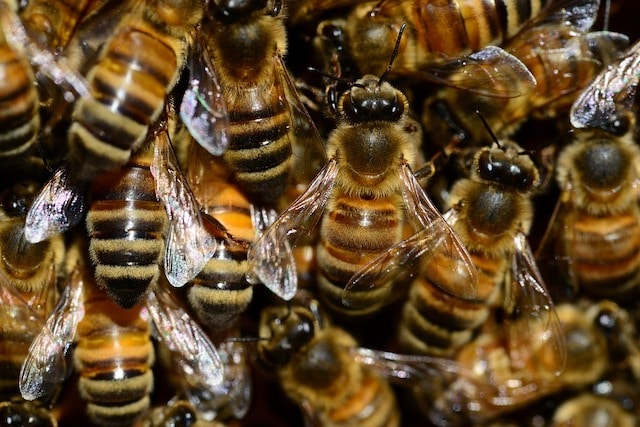
The story of how the word ‘bee’ came to be in the English language is quite an interesting one. It didn’t directly originate from the Latin ‘apis’ as one might expect. Instead, ‘bee’ has its roots in the Old English ‘beo’, which in turn came from the **Proto-Germanic bion*. This connection can be seen even in classic works like ‘Beowulf’. In that epic poem, the term ‘beo’ also meant ‘bee’. And interestingly, the name ‘Beowulf’ itself has a figurative meaning related to bees. It means “a wolf to bees,” which was a symbolic name for a bear, considering bears’ fondness for honey.
Bees have had a significant impact on the English language beyond just the word for the insect itself. They are the origin of various phrases that incorporate the word ‘bee’. For example, we have ‘spelling bee’, ‘quilting bee’, and many other types of ‘bee’ activities. These terms allude to the fact that bees have been associated with work and productivity since at least the year 1530. Additionally, since the 18th century in America, ‘bee’ has also been used to describe collaborative effort or groups.
Another interesting phrase related to bees is ‘having a bee in your bonnet’. This expression appears to have its origins in Scottish language, although there is a possibility that it could date back to the early 16th century. In those times, having ‘a head full of bees’ was a way of saying that someone was “mad” or “manic”.
8. Slug: A Word Born from Laziness, Not Slime
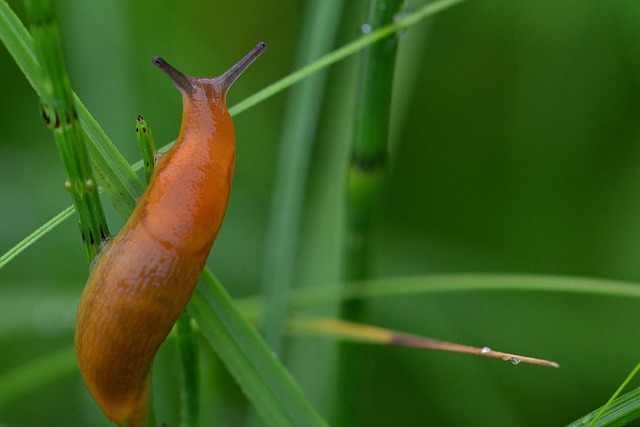
If ever there was a creature that wears its name like a badge of honor, it’s the slug. The word feels slow just saying it—slug—and that’s no accident. In fact, long before it referred to the gooey gastropods we find in gardens, it was an insult hurled at humans.
Back in the 15th century, calling someone a slug meant they were sluggish, lazy, and probably lying around doing nothing useful—think of a “sluggard”, which later became the go-to term for idle folks. Only in the early 1600s did the word get applied to the slow-moving, shell-less mollusks we now call slugs.
But the word’s journey doesn’t stop there.
There’s also the other kind of slug—the heavy lump of metal fired from a gun. Oddly enough, it comes from the same root idea: weight, slowness, and an absence of elegance. A metal slug isn’t precise or graceful—it just gets the job done, like a punch from nature’s underachiever.
Now here’s where things get creepier. The word “snail”, which we naturally associate with the slug’s shelled cousin, has even older origins. It comes from the Proto-Indo-European root snog- or sneg-, meaning “to crawl” or “to creep.” It’s a word that literally slithers through time. No surprise then that “snake”—via Old English snaca—shares the same slithery DNA.
7. Tarantula: A Name with a Fascinating History
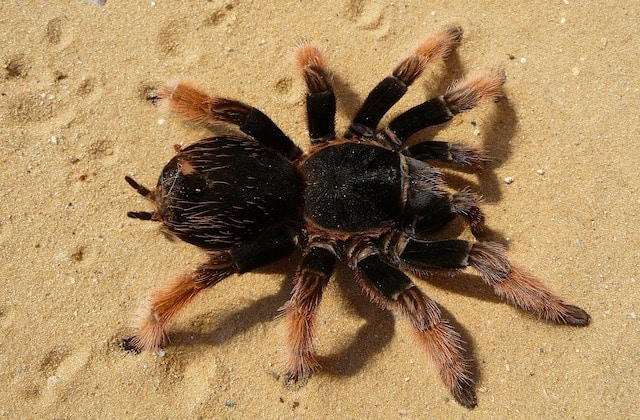
Ever wondered about the tarantula and how its name came to be? Well, it’s a story full of surprises!
Nowadays, when we hear the word ‘tarantula’, we think of any of the over 1,000 species in the family Theraphosidae. These are those big, hairy spiders native to the Americas. But it wasn’t always so.
Originally, the term ‘tarantula’ referred to a single species from a completely different family. It was Lycosa tarantula, a type of wolf spider found in southern Europe. This particular wolf spider was named after the Italian seaport Taranto, located in its native Apulia region. By the way, the origin of Taranto itself is quite interesting. It might come from the Illyrian darandos, which means “oak”.
Now, here’s where it gets even more curious. The Spanish seem to have taken this Old World name and applied it to spiders in the New World. It’s like they just recycled names for the creatures they encountered, even though there were obvious differences. After all, Lycosa tarantula, the so-called tarantula wolf spider, might be big for a European species, but it’s nowhere near as big as the real tarantulas we think of today. In fact, it’s only about half the size of the smallest tarantula specimens!
But that’s not all. From the tarantula wolf spider, we also got the words ’tarantism’ and ’tarantella’. Back in the 15th century, tarantism, which was a kind of dancing hysteria, was thought to be caused by a bite from the Lycos tarantula. Can you imagine? Bitten by a spider and then dancing uncontrollably!
And what about the ’tarantella’? Well, it was the cure – also a dance – that was invented around Taranto. It’s as if the people thought the best way to fight off this strange dancing illness was with more dancing!
Now, let’s take a quick look at the origins of ’spider’ and ’arachnid’. According to the Online Etymological Dictionary, ‘spider’ comes from the Proto-Germanic *spin-thron-, which clearly refers to its web-spinning habit. Spiders are amazing web-makers, after all.
And ’arachnid’? It comes from the Greek word for ‘spider’, arakhne. But arakhne wasn’t just any ordinary spider. In Greek mythology, Arakhne was a mythical figure who dared to challenge Athena, the goddess of wisdom and crafts, to a weaving contest. Well, Arakhne won that contest, but Athena, in a fit of jealousy, tore up her tapestry. In the end, Athena turned the rope Arakhne used to hang herself (in despair, perhaps) into spider’s silk, and Arakhne herself into a spider. What a wild story!
6. Worm: The Ancient, Twisting Origin of All Things Creepy
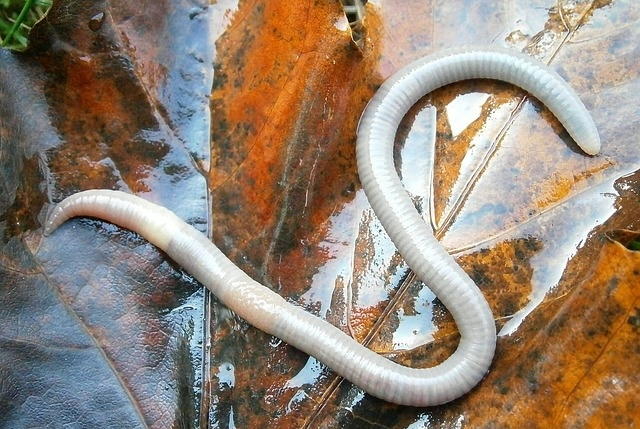
Before it wriggled its way into gardens and compost bins, the word “worm” had a much more dramatic life. In Old English, it was “wyrm”, and it didn’t just mean a humble earth-dweller—it referred to serpents, dragons, and even legendary beasts that twisted through myths and nightmares.
Yes, dragons. The kind that knights fought and bards sang about.
That’s why, in ancient texts, when stories tell of St. Patrick driving “worms” out of Ireland, they weren’t talking about tiny soil crawlers—they were likely describing something closer to snakes or even mythical serpents. The word traces back to the Proto-Indo-European root wer-, which means “to turn” or “to bend.” That twisting motion? It’s the heart of the word itself.
This broad, bendy definition wasn’t just poetic—it was practical. In old classifications, “worm” was a catch-all for pretty much anything that creeped or crawled: maggots, scorpions, and in some languages like Russian, even all insects. In short, “worm” was once shorthand for anything people found unsettlingly wiggly.
And here’s a fun (or humiliating) twist: the word “worm” has also been used as an insult for centuries. Calling someone a “miserable worm” dates back as far as Old English—a stinging way to describe someone as pathetic, lowly, and spineless. Before “bug” became the go-to term for pests, “worm” was the original poster child for all things repulsive and writhing.
5. Cricket: A Sport with an Onomatopoeic Name and a Rich History
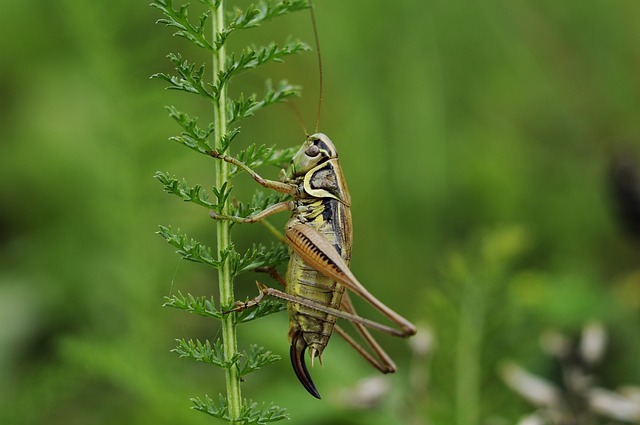
When we think of the game of cricket, we often picture players on a lush green field, bats in hand, ready to engage in a battle of skill and strategy. But have you ever wondered about the origins of its name? It’s quite a fascinating story!
The word ’cricket’ has its roots in Old French. It comes from the term criquet, which in turn is derived from the verb criquer. This verb means “to creak” or “to rattle”. Now, you might be thinking, what does a creaking or rattling sound have to do with a sport? Well, it’s all about the onomatopoeic nature of the word. The sound associated with the game, particularly the noise made when the ball hits the bat or the wicket, is what led to this name.
And here’s where it gets even more interesting. The connection between the name and the sport goes deeper. The rattling sound that inspired the name is related to the wicket. A wicket is an essential part of the cricket game, consisting of three vertical stumps and two small horizontal bail. The term ’wicket’ has its own etymological journey. It means “to bend” or “to yield”, tracing back to Proto-Indo-European *weik.
In the context of cricket, this idea of “yielding” or “bending” takes on a symbolic meaning. The wicket is something that the batsman must protect, and when it gets knocked down, it’s as if it has “yielded” to the bowler’s delivery. This concept of yielding has long been synonymous with the spirit of the sports game itself.
You might have heard the phrase “it’s just not cricket”. This common expression is used to describe behavior that is considered unsporting or unfair. It reflects the values and principles that are deeply ingrained in the game of cricket. Just like the wicket that stands firm and resists being easily knocked down, the spirit of cricket demands integrity, fairness, and respect for the rules.
4. Hornet: The Buzzing Trumpet of Nature’s Warning System
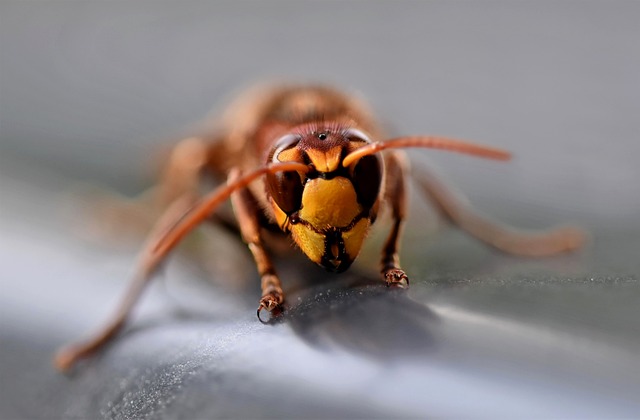
When you hear the word “hornet,” chances are your first reaction isn’t linguistic curiosity—it’s fear. And rightly so. These fierce wasp cousins are notorious for their aggressive stings and no-nonsense attitude. But did you know their name is as loud and dramatic as their presence?
The word “hornet” actually sounds like what it describes. In Proto-Indo-European, the ancient root language of much of Europe and Asia, it began as an onomatopoeia—a word created to imitate the buzzing noise these winged warriors make. That same sound survived into modern languages like German (Hornisse), Dutch (horzel), and even Lithuanian (širšė, pronounced sheer-sheh).
In Old Saxon, hornets were literally known as “hornobero”—which translates to “trumpeter.” It’s a fitting name if you’ve ever heard one angrily circling your head.
But wait, there’s more buzzing beneath the surface. The “horn-” in hornet isn’t just about noise—it also connects to the word “horn”, as in the pointy, curved kind. Both come from the Proto-Indo-European root *ker-, which gave us a surprising family of English words like:
- Unicorn (one horn)
- Triceratops (three horns)
- Capricorn, corn, and even carrot—all linked to shape or curve.
While hornets may not have literal horns, their fierce stinger, intimidating antennae, and their shape definitely earn them a place in the horned hall of fame. And like a trumpet blast in a quiet field, their buzz is both a warning and a legacy—etched into language, biology, and our primal instinct to back away… slowly.
3. Flea: From the Insect to the Market – A Surprising Etymological Journey
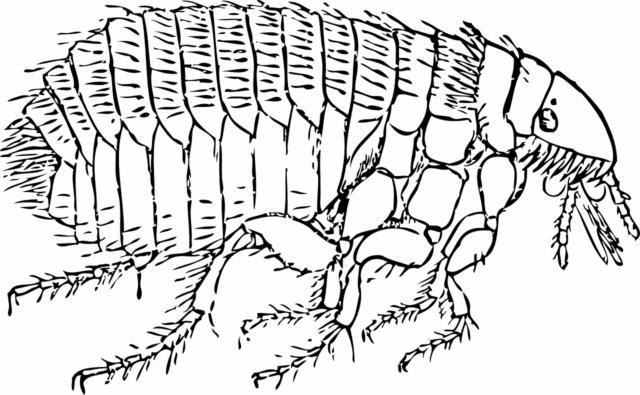
When we think of the word ’flea’, our minds often jump (pun intended!) to the tiny, pesky insects that seem to have a knack for making our lives itchy and uncomfortable. But the story behind this word is far more interesting than just a simple reference to these little jumpers.
It turns out that the word ’flea’ has a surprising connection to its homonym, which is also related to the action of running away. It may have originated from the word ’flee’, as in “to run away”. This makes sense when we consider the flea’s characteristic behavior of constantly jumping around. Fleas are known for their remarkable ability to leap from one place to another, seemingly always on the move, much like someone who is trying to flee from a situation.
The etymology of ‘flea’ takes us back to the Proto-Germanic *flauhaz. This is quite distinct from the Proto-Indo-European *plou-, which is used in Romance languages for related words. In Old English, the word ’fleon’ meant “to flee”. So, the connection between the insect that jumps around and the concept of running away is quite logical when we look at it from this linguistic perspective.
Now, let’s turn our attention to flea markets. You might think that these bustling marketplaces have something to do with fleas running away, but that’s just a folk etymology. There have been several theories put forward over the years, but most of them don’t hold up under scrutiny.
One such theory claims that the market stalls in Paris were forced to flee their alleyways and side streets to avoid getting caught in demolitions. However, this theory falls apart when we realize that the French word for ‘flee’ (in the sense of “to run away”) is ’fuir’, not ‘flea’. So, it’s clear that this supposed connection is just a myth.
Another spurious origin story for ‘flea market’ claims that the Dutch traders of New Netherlands (which is now New York) called their markets ’vlaie’ (“swamp”) markets because they were held on a former salt marsh. But again, there’s no real evidence to support this claim.
The truth is much simpler and more straightforward. Dating back to 1910, the term ’flea market’ actually comes from the French ’marché aux puces’, which literally means “flea market”. This name was given because of the fleas that were thought to live on the old clothes and furniture that were often sold at these markets. So, while the fleas themselves might not have been running away, their association with these second-hand goods gave rise to the name we use today.
2. Butterfly: More Than Just a Pretty Name
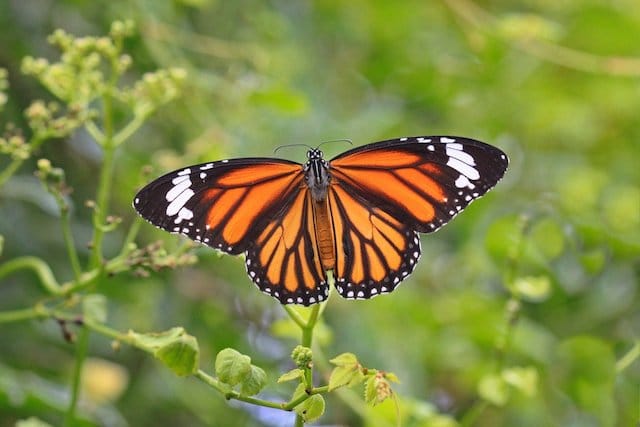
The name “butterfly” might sound whimsical, but its real origin? Less poetic—and definitely more weirdly fascinating.
There’s a popular myth that the word used to be “flutterby”, swapped over time because of the creature’s flitting flight. Cute, but incorrect. In truth, “butterfly” likely refers to… its poop. Yes, seriously. The yellowish droppings of some butterflies apparently resembled melted butter, which could explain why in Dutch, the insect is unflinchingly called “boterschijte”, or “butter-pooper.” Straight to the point.
Of course, that’s just one theory. Another bit of folklore suggests that butterflies—believed to be witches in disguise—would sneak into homes and steal uncovered butter. Others think the name comes from the buttery-yellow wings of common European species like the brimstone.
But the strangeness doesn’t stop there.
The butterfly’s earlier form—the caterpillar—also has an unusual etymology. It comes from Old French “chatepelose”, meaning “hairy cat.” Picture one of those fuzzy little larvae and the name starts to make sense. This “shaggy cat” idea carried into other languages, too. In modern French, a caterpillar is a “chenille,” meaning “little dog.” Meanwhile, in Swiss German, they went full metal and dubbed it “teufelskatz”: the “devil’s cat.”
How did something so delicate and beautiful end up with such gritty, even creepy, linguistic baggage? Perhaps it’s nature’s reminder: beauty often hides the weirdest backstory.
1. Ladybug (or Ladybird): A Fascinating Insect with a Rich History
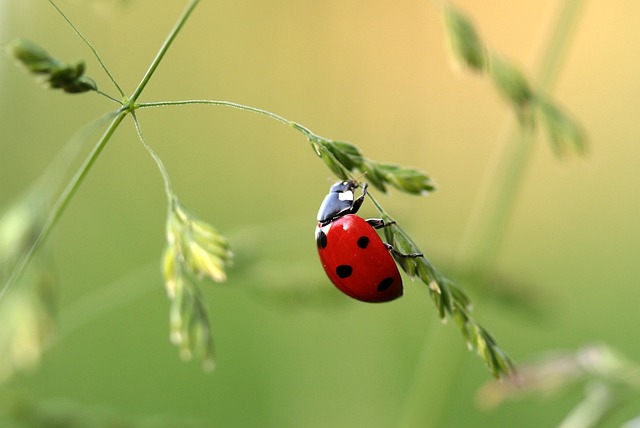
When it comes to the charming little insect that often graces our gardens and fields, we commonly refer to it as either a ladybug or a ladybird. But is there really a difference between the two? Well, not in a significant sense. However, some might argue that ’ladybird’ has a slightly more affectionate ring to it.
Belonging to a diverse family that boasts over 6,000 species, these little beetles have long captured the hearts of humans. Their popularity isn’t without good reason. One of the most remarkable aspects of ladybugs is their role in pest control. In just a brief lifespan of three to six weeks, a single ladybug can consume an average of 5,000 aphids, starting right from the moment it’s born! This voracious appetite for aphids makes them a natural and beneficial presence in our gardens, helping to keep pest populations in check.
Another reason for our fondness is their stunning appearance. The shell of a ladybug is among the prettiest in the animal kingdom. It’s not just a random splash of colors; there’s a deeper meaning behind it.
Our affection for this beetle is closely tied to the term ’lady’. It’s not merely a reference to the attractive patterning on its shell. Instead, it specifically alludes to “Our Lady,” the Virgin Mary. In German, the name is even more explicit: Marienkäfer, which translates to “Mary’s beetle”. The symbolism doesn’t end there. The seven black spots on a ladybug’s shell are said to represent Mary’s seven sorrows, while the red color, which is often described as scarlet (coccineus in Latin), symbolizes the cloak that she wears. It’s this red color that gives the ladybug family its name, Coccinelidae. Interestingly, the Catholic priest who coined this name was spared execution, likely due to his extensive knowledge of beetles.
In English, the story gets a bit more complicated. The term ’bird’ in ladybird might also have a connection to “Our Lady”. From at least the Middle Ages, the word ‘bird’ was used to refer to a maiden, a woman of noble birth, or even the Virgin Mary herself. This adds another layer of meaning to the name.
However, things get even more interesting when we look at the history of the names. ’Ladybird’ was in use long before the beetle was officially named in the 1670s. Back then, it meant “sweetheart” and dates back as far as the 1590s. ’Ladybug’, which came later as a name for the insect, could have potentially avoided confusion if it had caught on more widely. But unfortunately, the British found the term ’ladybug’ evoked thoughts of buggery. As a result, over the next hundred years, they came up with various alternatives like ’ladycow’ and ’ladyfly’ before finally reverting back to ’ladybird’.

























